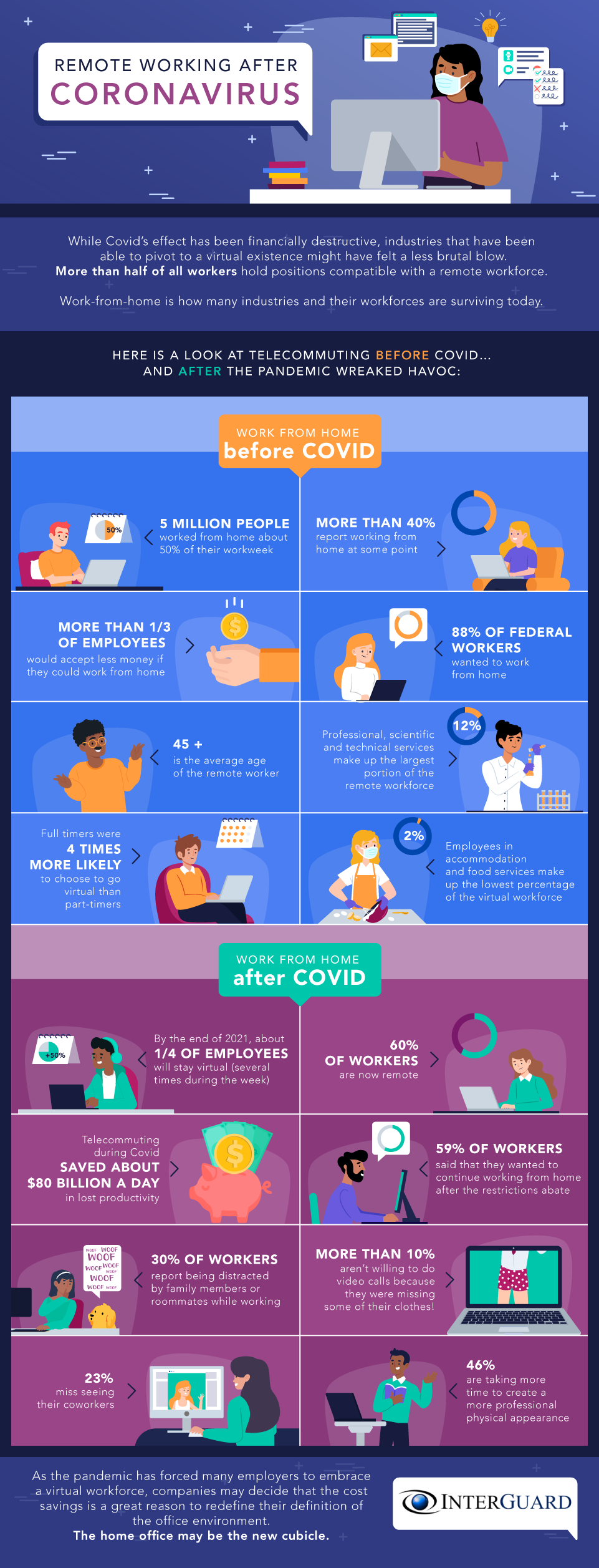
Calculating the ROI of Remote Working
May 19, 2020
How Does Employee Monitoring Software Work?
June 5, 2020Remote Working after Coronavirus

In the United States alone, Covid has infected more than one million people.
Unemployment has skyrocketed to a staggering 20 percent, only five percent below the record number seen during the Great Depression. Many workers, however, have been able to maintain their employment status from a new office environment: home.
While Covid’s effect has been financially destructive, industries that have been able to pivot to a virtual existence might have felt a less brutal blow. Workplace Analytics estimated that more than half of all workers hold positions compatible with a remote workforce.

When restrictions are lifted and life—and work—go back to normal, what happens then? Has Covid irreversibly changed the way we handle business? Will the economy go virtual? Covid and its devastation have left even some of the world’s leading experts unable to predict the far-reaching consequences.
Work-from-home (or WFH) is, for now, how many industries and their workforce are surviving.
Here is a look at telecommuting before Covid…and after the pandemic wreaked havoc:
B.C.: Before Covid
- 5 million people worked from home about 50 percent of their workweek
- More than 40 percent report working from home at some point
- The majority of federal workers wanted to work from home (12 percent did NOT)
- More than one-third of employees would accept less money if they could work from home
- 45+ is the average age of the remote worker
- Professional, scientific and technical services make up the largest portion of the remote workforce (12 percent)
- Employees in accommodation and food services make up the lowest percentage of the virtual workforce (2 percent)
- The choice to work from home favors full timers who were four times more likely to have the choice to go virtual than part-timers.
WFH After Covid:
- Global Workplace Analytics estimates that, at the end of 2021, about one-fourth of employees will stay virtual (several times during the week)
- Global Workplace Analytics estimates that allowing employees to telecommute during Covid has saved about $80 billion a day in lost productivity (if businesses had simply just closed)
- 60 percent of workers are now remote
- More than half (59 percent) said that they wanted to continue WFH after the restrictions abate
- 30 percent of workers report being distracted by family members or roommates while working
- More than 10 percent aren’t willing to do video calls because they were either missing some clothes or missing all their clothes!
- Almost half (46 percent) are taking more time to create a more professional physical appearance
- 23 percent miss seeing their coworkers, 22 percent…not so much
- 15 percent don’t miss the epic battles related to the office climate.
As the Covid lockdowns and shelter-in-place mandates continue, working from home will remain the status quo.
As these restrictions subside, some companies may elect to continue telecommuting while others welcome back business as usual. However, as the pandemic has forced many employers to embrace a virtual workforce, companies may decide that the cost savings is a great reason to redefine their definition of the office environment. The home office may be the new cubicle.



